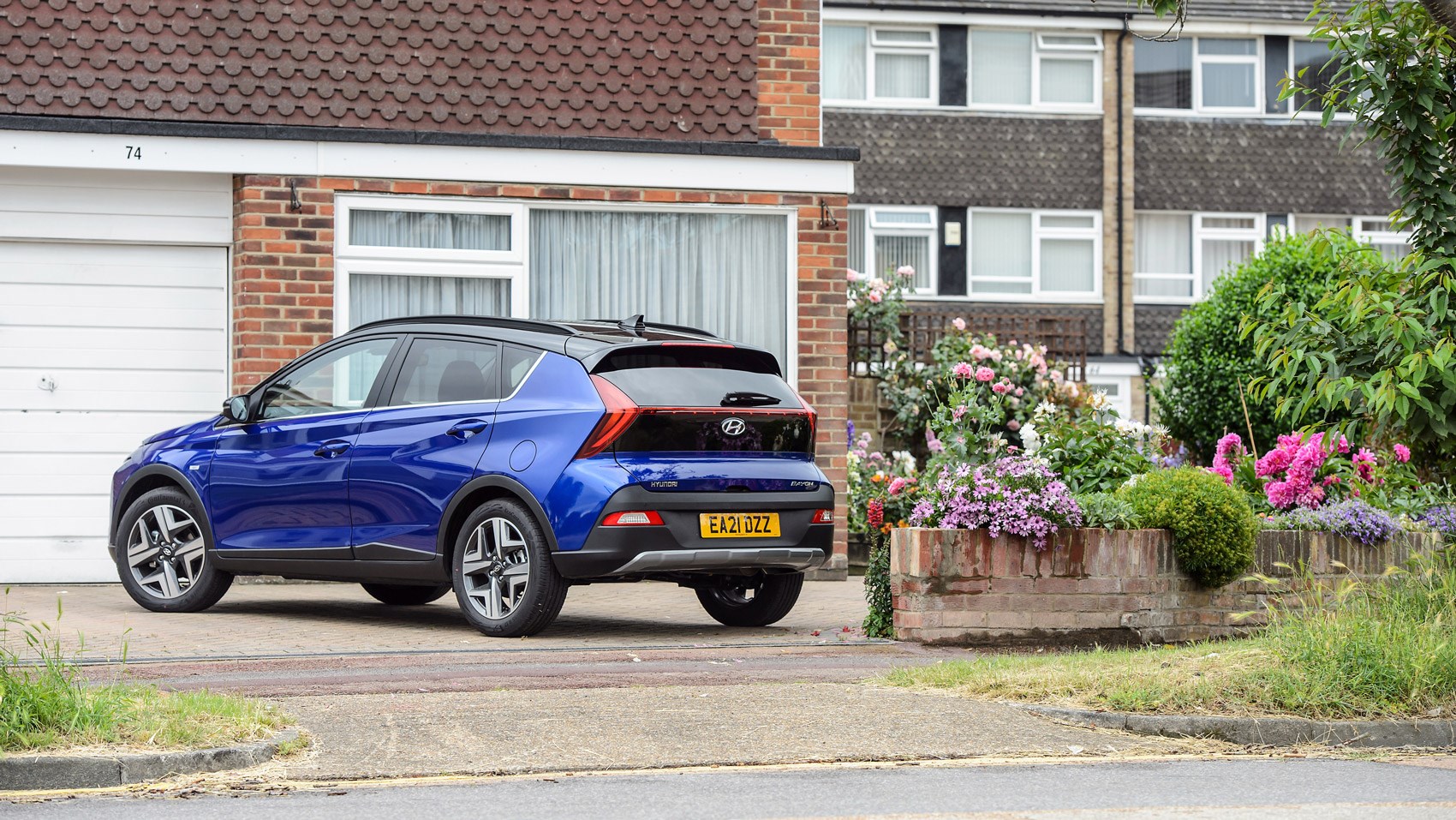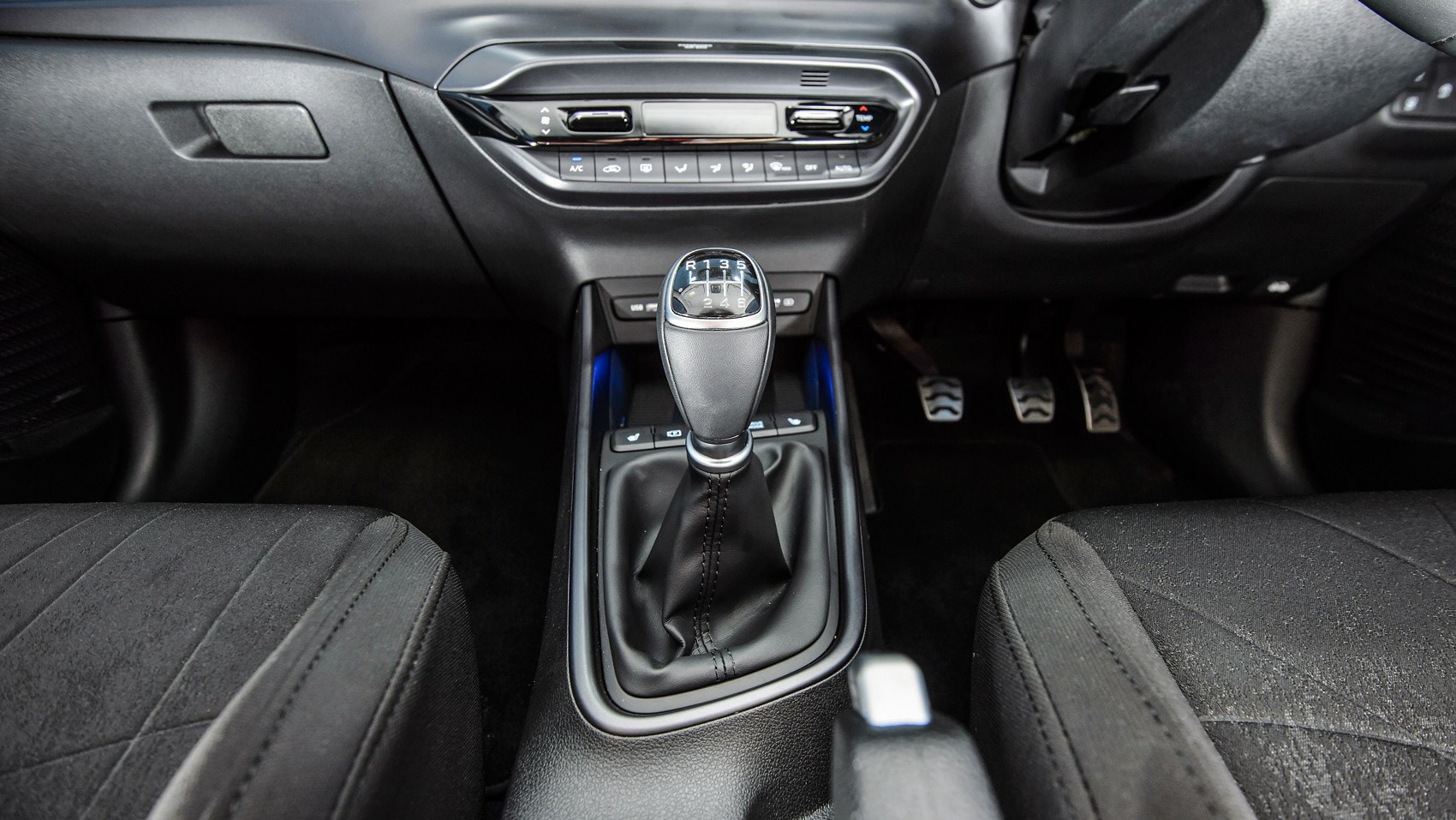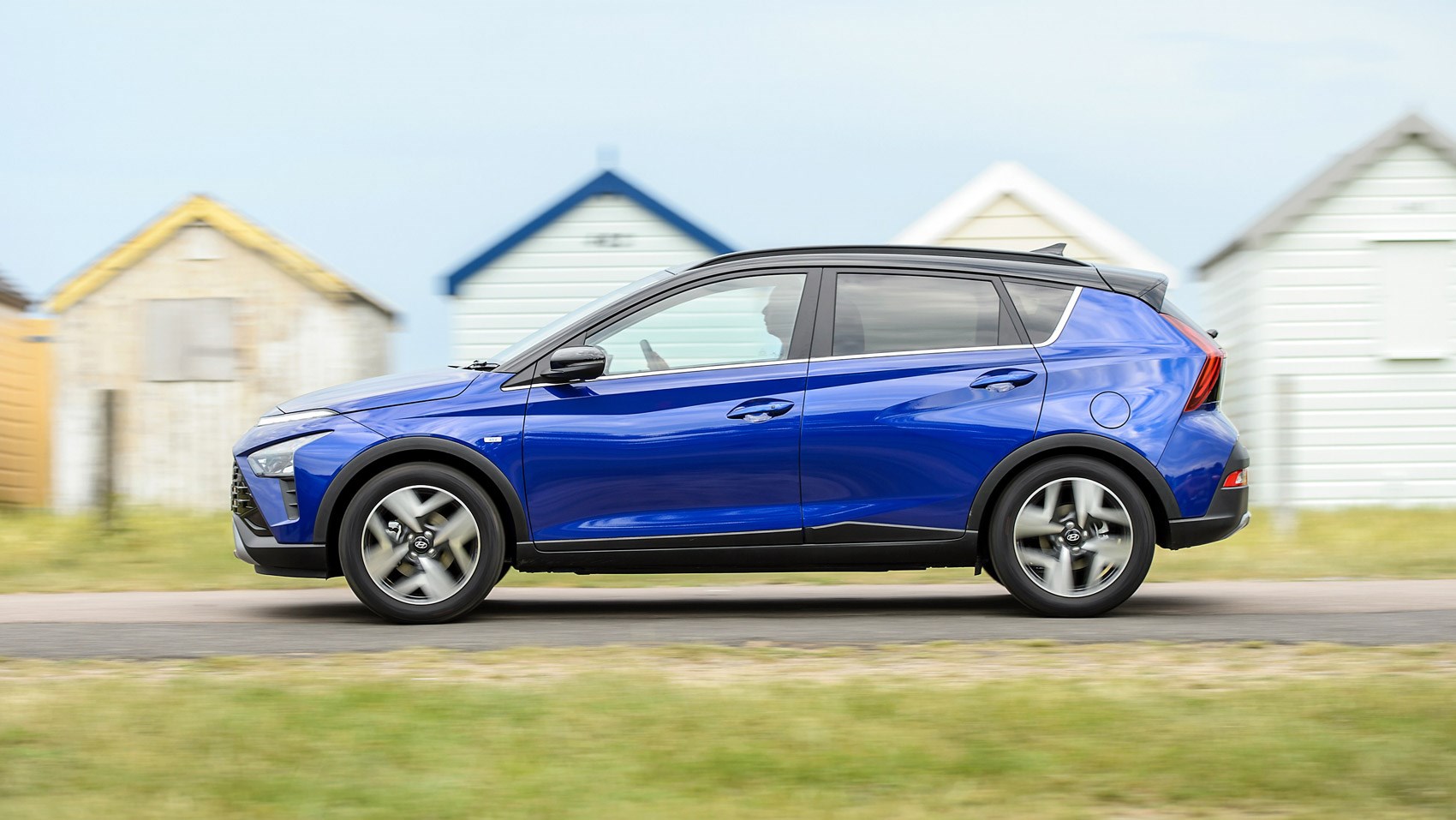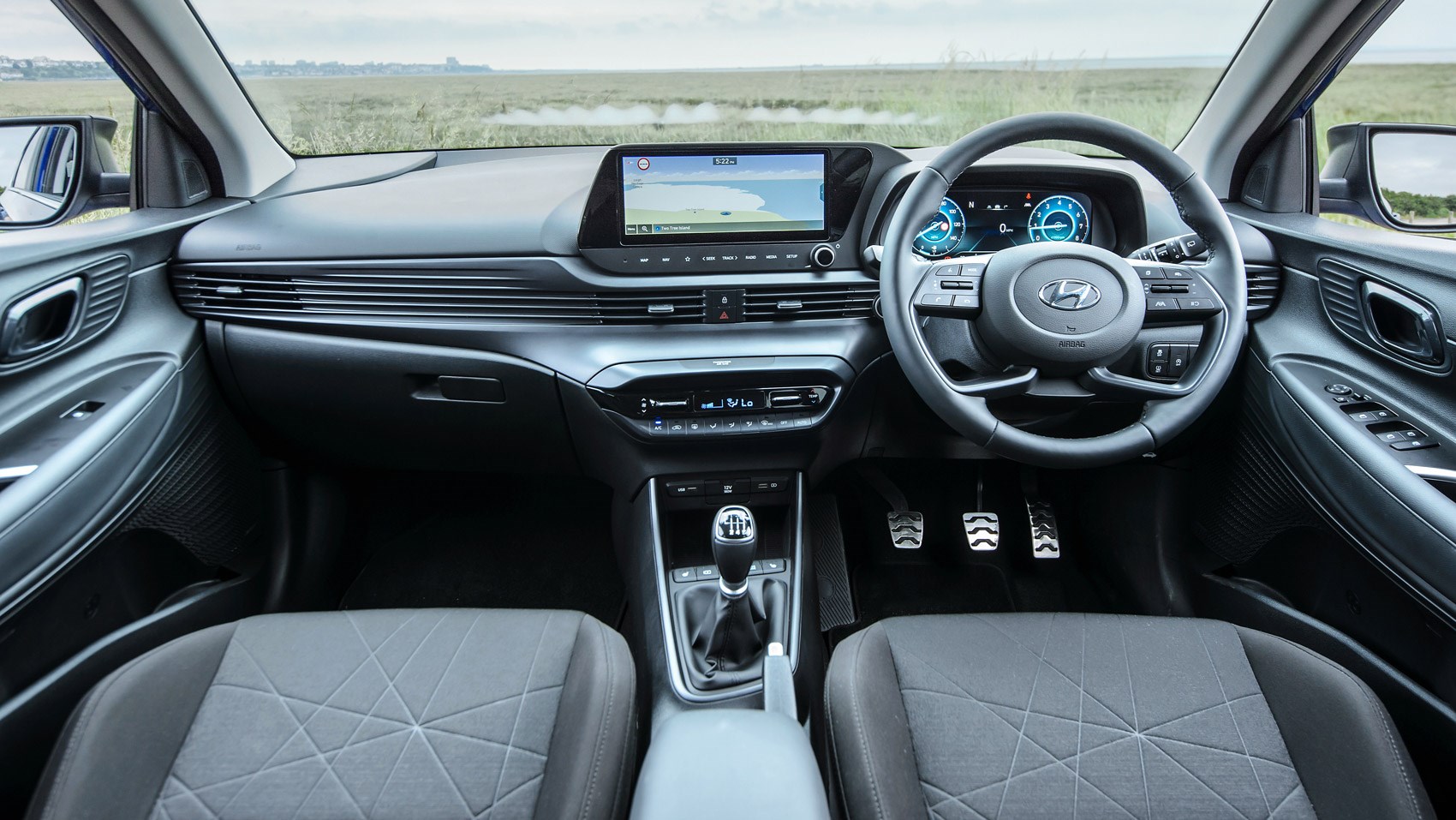► Hyundai’s cheapest SUV driven
► Based on the i20 supermini
► Mild hybrid powertrains available
With the small SUV class brimmed to bursting point, it can be rather tricky to keep track of all the runners and riders. Indeed, the addition of the Hyundai Bayon to the class suggests that even its maker can’t quite keep up.
Why? Well, this is the Korean company’s second small SUV, sitting below the Kona at the base of the high-rise Hyundai range. However, this isn’t some sparsely equipped bargain-basement special and is actually more practical than its pricier brother. Confused yet?
Well don’t be. The Kona is the flashier choice, available with a far wider choice of propulsion methods under its bonnet and is due to be replaced by larger second-generation model. With that sorted out, let’s get back to the Bayon.
There’s a choice of two 1.0-litre turbocharged three-cylinder engines that come complete with 48v mild hybrid assistance. These engines are shared with the i20 supermini, no surprise as the Bayon is closely related.

Does the Bayon actually do anything noteworthy?
Actually, it does. While plenty of mild hybrid autos can coast at speed with their engines off, it’s not a trick that’s usually replicated in the manual; after all, you can’t always rely on the bag of flesh behind the wheel to keep up with clutch duties.
The Bayon gets around this with a clever fly-by-wire clutch that allow the computers to disengage drive when the engine shuts off, and quickly reengage when you get back on the throttle. It’s a system that works well, seamlessly and swiftly going about its business regardless of speed, aided by an impressively slick stop start system.
So, where’s the rub?
With no physical connection between the clutch and the pedal that operates it, you can’t really feel where the biting point is. It’s not like you’ll be bucking your way along and stalling like a learner, but you’re relying on muscle memory and the sensation of movement rather than any feedback through the pedal.

The mild hybrid system adds a useful slug of torque at low engine speeds, the dinky three-pot happy to pull from just 1200rpm when you’re driving sedately. With just 118bhp to call upon, outright performance is merely adequate – you’ll have no stress getting up to motorway speeds on most sliproads, but a cheeky B-road overtake requires a pretty big gap in traffic.
What’s the rest of the driving experience like?
You certainly won’t be yearning for more power. Make no mistake, the Bayon handles in a tidy fashion with modest amounts of body roll plenty of grip and pleasing balance if you do start to throw it around. But although the six-speed manual gearbox and steering can be described as light but pleasantly precise, this isn’t something you’ll relish driving quickly. A Ford Puma is still the small SUV to beat here.

No, Hyundai has instead focused on comfort with the Bayon soaking up all but the craggiest road surfaces. It’s more tightly controlled than the floatier Skoda Kamiq and only particularly vicious potholes and pimples generate a thump or a thud. Considering the engine is refined and doesn’t intrude too much at motorway speeds, this is a small SUV that soaks up the miles rather well.
How about the interior?
If you’re a sucker for squishy plastics and glitzy trim pieces, look away now. The dash is shared with the i20 so you’ll find predominantly hard, scratchy black plastic with very few slivers of chrome or even silver plastic to lift things further.
The switches work with precision and everything is put together solidly, it’s just rather dour even with the half grey dashboard that’s standard with Ultimate spec cars. Praise should be awarded for clear and easy to use infotainment system that’s a chunky 10.25 inches on all but base models and (halleluiah) physical controls for the heater.

You don’t sit particularly high up, just a handful of inches more than a regular hatchback. At least the driving position itself is sound with plenty of adjustment to suit all sizes and shapes. Space up front is plentiful with a good spread of storage while rear leg room is good for the class. Rear head room isn’t quite so good, but you’d need to be over six feet tall to have an issue. The 411-litre boot isn’t particularly big for the class, but still beats a Volkswagen Golf’s
Hyundai Bayon: verdict
Looking at the Bayon from a purely rational viewpoint, it makes a lot of sense. The 48v enhanced engines are refined and pull well from low revs, while the ride is comfortable. It’s also more spacious inside than many rivals and benefits from Hyundai’s five-year warranty. Sensible stuff.
However, despite impressive infotainment the interior is just too spartan and sombre, and although it’s spacious inside a Ford Puma has a bigger boot and will make the corners of your mouth turn upward far more readily on a country road.
Read more Hyundai reviews here